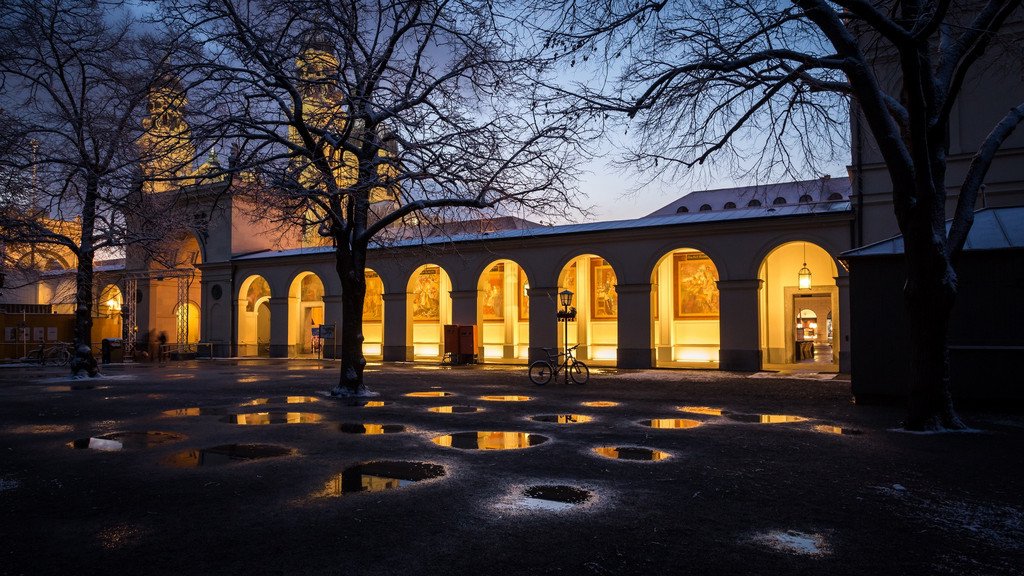Prof. Dr. Ulrike Müßig gave a lecture at Schloss Ludwigsthal on the 12th of May 2018 on the occasion of the 200th anniversary of the "Oath on the Constitution of the Kingdom of Bavaria 1818". Analysing constitutional narratives in visual art of the early nineteenth century, the follow up-lecture on the ReConFort overall topic of Constitution and Communication concentrated on the artists' eyewitness of the oaths on constitutions as culminating symbolic monments of bringing the constitution not only into legal life, but to render its acceptance and recognition in everybody's physical life visually perceptible. Far beyond David's well-known Tennis Court Oath (study persevered in the Parisian Louvre) there seems to be a specific iconography of the constitutional oath as the decisive moment to communicate the constitution's coming into force to the population. Starting from the supraporte depiction by an unknown artist (before 1840) in the former mansion house of the glass manufacturer Abele in Ludwigsthal/Bavarian forest near Passau, Prof. Müßig analyzed constitutional idiomatic in art history (also including the Wittelbach cycle, as in the photo above) with particular attention to the depicted incompatibilities in early European constitutionalism.

Lecture Programme 12th of May 2018, 19.30
Detailed information can be found here: https://www.wir-feiern.bayern/veranstaltungen/3020/

From the 15th - 17th February 2018, the ReConFort project had its final conference in Toruń Poland.
After Greetings by the Dean of Faculty Prof. Danuta Janicka and the Head of the Chair of the History of Political-Legal Doctrines and the German Law Prof. Stanislaw Salmonowicz and the welcome by the Principal Investigator Prof. Ulrike Müßig, the participants followed the lectures of Tomasz Kucharski (Public treasury settlements” and their acceptance by the General Diet in the Polish-Lithuanian Commonwealth (1569-1791) - Purely feudal institution whether a great step towards modern parliamentary control on the performance of the budget act by the government?), Anna Tarnowska (Willing that the Council of Guardians should be responsible to the Nation for their action…”. The problem of justiciability of power in the era of Polish May Constitution 1791), Michał Gałędek (The sovereignty and the ministerial responsibility in the course of work on the constitution for the Kingdom of Poland, 1814-1815), Marcin Byczyk (The fiction of ministers’ accountability in the Kingdom of Poland 1815-1830), Gonzague Prod Homme (Rousseau’s project of a constitution for Poland and his attempt to achieve a moral constitution) and Anna Klimaszewska (La prise à partie in the French Code of civil procedure of 1806 and the question of the extent of the legal responsibility of the judge).
The following day, further workshops, lectures and discussions were held by the participants, i.e. Ministerial accountability and constitutional jurisdiction in 19th century Germany by Joachim Kummer and Franziska Meyer, Justiciability of politics in the Kingdom Hannover between 1814 and 1866 by Prof. Steffen Schlinker, Ministerial Responsibility as Accountability of the Rulers towards the Governed in 19th century Italy by Giuseppe Mecca, Subjects of our most gracious Majesty’ Setting up Legal Accountability in a ‘Free’ Colonial State: Constitutionalisation and Constitutional Practice in South Australia Colony by Bodie A. Ashton, ReConFort Open Database – Digitisation Process, Cooperations, and sustainable operability by Armin Gerl and ReConFort Open Database – Digitisation Process, Cooperations, and sustainable operability by Prof. Ulrike Müßig.
A report on the meeting by Dr. Anna Tarnowska in the newspaper "Voice of the Academy" can be found online: http://glos.umk.pl/2018/04/reconfort/
Photo: Krzysztof Żółtowski, Stowarzyszenie Toruńskie Spacery Fotograficzne.